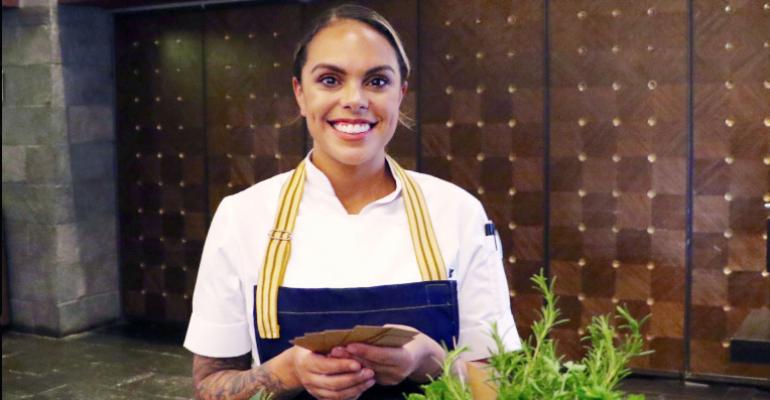Just 15 months after taking the helm as executive chef at the JW Marriott El Convento Cusco in Peru, Chef Thais Rodriguez was tapped by Marriott International to bring her vision of culture-to-table cuisine to Marriott properties worldwide.
In Cusco, her redesigned menus, hyper-local group experiences, and gorgeous presentation of regionally inspired dishes quickly gained accolades. Contributing writer Regina Baraban caught up with Chef Thais in early July, a few days before she started in her new position.
Tell us about your new job.
I am crazy excited for the new position. My title will be manager of culinary development for a company within Marriott called Culinary Concepts Hospitality Group. Basically I will be in charge of creating concepts and developing menus for Marriott properties worldwide. My mission is to bring creativity, originality, and excitement to the food and beverage scene in hotels.
What are the challenges of translating that creativity to a large group format?
Creativity in food is always something that can be present—whether it’s in the use of ingredients, presentation, cultural background, history of the hotel, etc. Of course there can be challenges with banquet food service, such as a local ingredient not being available in bulk. But presentation is one way you can always be certain that you will capture attention for group dining. For example, rather than serving a classic dessert like lemon meringue pie, you can deconstruct a few compounds of it for a completely different, and enhanced, presentation.
What is your impression of banquet food today, compared to a decade ago?
Banquet food is definitely changing for the best. A decade ago, it was about lots of gravies, blanched asparagus, and random garnishes like parsley leaves that just didn’t go with the dish. Today people are realizing that you can be creative with banquet food and have fun with the presentation.
What do you see as today’s most interesting food trends?
Right now, it’s all about resources. Where does our food come from, who is growing it, at what rate is the mass production being consumed, and who are the main consumers. What is the story behind the farmer or the person who is producing the food? And then there is what’s good and healthy for you, what foods and ingredients are going to benefit you now and later. More than ever before, people are interested in what they are eating, and they should be—it’s about time!
Related:
- Why Your F&B Needs to Think Beyond the Kale
- 5 Wild, Wonderful F&B Ideas You Have to Try
- Banquet Food Transformed, with Chef Nick Calias
You’re known for a culture-to-table philosophy. How you will bring this to Marriott properties worldwide?
It’s all about getting to know the culture of the hotel, the specific location, and what local ingredients are available. Those things are super important to me.
Can you bring culture-to-table concepts to banquet foodservice?
Definitely. In Peru, where I was based at the JW Marriott El Convento Cusco, many local ingredients are available in large amounts. But if I couldn’t get all I needed for a banquet, then I would order from somewhere else to make a classic cultural dish. Classic cultural dishes are one thing, and having the resources necessary to make them using all local ingredients is another thing. Bringing culture to the table is a combination of both. That can be done, without a doubt, for any size group.
Do you have an example?
At the JW Marriott El Convento, the Pachamanca Experience in the Sacred Valley exemplifies how you can bring a profound cultural experience to a large group. The ritual dates back more than 5,000 years to pre-Inca times and is still popular today in communities around the Andes. It takes place in a mountain setting outside of Cusco and is orchestrated by the hotel’s chefs. They start by digging a hole in the ground and heating stacked stones with firewood. Leaf-wrapped ingredients include potatoes, meats, and vegetables that are carefully placed on the heated stones. The cooking pit, or huatia, is covered with damp sacks and about six inches of soil to prevent steam and smoke from escaping. While the food cooks, the hotel can arrange for an Inca priest to lead a ceremony giving thanks to Mother Earth.
What’s your advice to meeting pros?
Meeting planners and chefs need to discuss what the client wants to achieve, and how food service can incorporate the culture of the destination—if the client wants that. Give the chef time to research, set deadlines, and schedule taste panels that allow the chef to interpret the F&B goals and showcase ideas. This is when the magic happens. Also, mood boards are a huge help. Meeting planners who have come to me with mood boards have a clear understanding of what they want and from there it’s smooth sailing.





